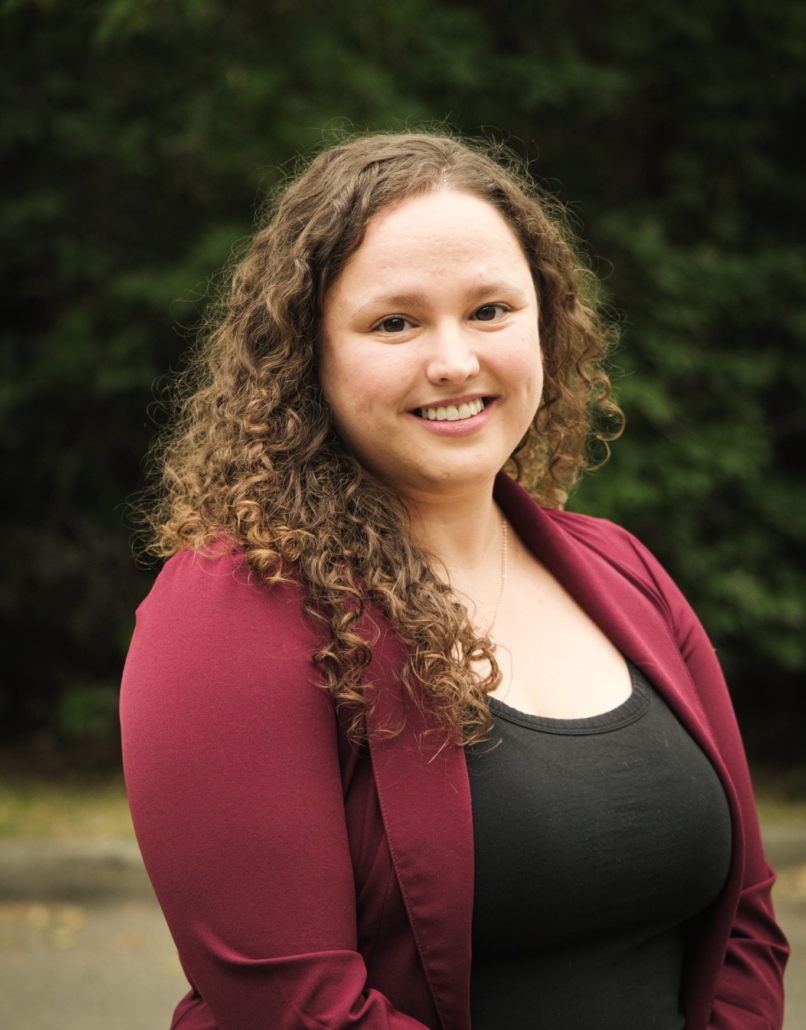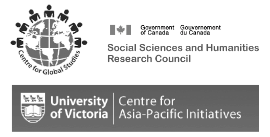Profile: Letitia Johnson

Letitia Johnson didn’t set out to become a historian of the Japanese Canadian community, to which she is a self-confessed “outsider,” (much like the writer of this article). Rather, her current work as a SSHRC-funded postdoctoral fellow with the Past Wrongs, Future Choices project is the intersection of two different sides of her academic work. Long a student of medical history, it was her first encounter with the injustices of the Internment Era as an undergraduate at the University of Alberta, spurring her “infuriation over the fact I hadn’t been taught this in grade school myself,” which started her on the path to combining these fields for the first time.
Johnson recalls a course on social movements taught by Dr. Susan Smith, who has touched on Internment in some of her own work: “I wrote a paper on the Japanese Americans who challenged Executive Order 9066 in the United States. [Smith] put a little sticky note on my paper that said, ‘this would be a great topic for an Honours paper.’ So, that kind of spiraled into a Master’s research project with her, and then I turned to the University of Saskatchewan to do my PhD with Erika Dyck there. I envisioned it as switching to my medical history brain. And now, having the opportunity to work with the Past Wrongs, Future Choices team gives me the chance to speak more to the Japanese Canadian side of my education and my research project. Kind of a back-and-forth between those two interests in terms of my education over the past decade or so.”
When she first set out on her PhD (awarded by the University of Saskatchewan in 2023), Letitia conferred with both Erika Dyck and Jordan Stanger-Ross, whose work on the Landscapes of Injustice project she would soon find quite useful. The latter told her that she could become “either a medical historian who talks about Japanese Canadians or a Japanese Canadian historian who talks about medicine.” So, she says, “I chose medicine first. And with the continuation of ‘Landscapes’ in ‘Past Wrongs’, I saw that as a great opportunity to get to flip that coin and talk about a different side first.”
Letitia’s current research with PWFC focuses on how “racialized healthcare providers play an important role in sustaining the healthcare landscape in Canada,” in the context of both Canadian and transnational Nikkei internment stories. In particular, many Nikkei healthcare workers were displaced by Internment, forever transforming the demographic geography of the healthcare system across nations. There are all sorts of complicating factors to integrating such histories within national narratives. In Canada, for example, Letitia says that, “the conversation tends to be post-Medicare [post-1960s], so bringing [it] back into earlier decades where we might not identify that racialized [person] as anything other than an internee or some other label, to think about them as a healthcare professional, is very new.” Nevertheless, there is a visceral and intimate quality to a field of human activity which, after all, touches the lives of all people. Says Letitia, “When I talk about my research with people in the Japanese community here in Victoria, even, they’ve all got a story. […] Everyone can say something about hospitals or healthcare during Internment that they’ve heard through family or friends. It’s just not been part of the historiography that’s been written down.”
There is a profound irony to the story which Letitia is working to reveal. Despite the moral shadow of the history of Internment, “BC rural and remote [regional] health [were] changed forever because of the presence of internees in these spaces […] The establishment of clinics in such rural and remote spaces was sustainable because these communities were forced to be there. These professionals were forced to be there. And that doesn’t go away after the 1940s.” Letitia offers one example of a Nikkei physician interned at Kaslo, BC, whose arthritis clinic later made the village an unlikely center of specialist treatment for patients from across the Pacific Northwest. Moreover, some such professionals eventually relocated to metropolitan areas, bringing with them an expertise on rural medicine which would influence their actions in future careers as policymakers. Such innovations presupposed both the injustices of the Internment Era and the resilience of the Japanese Canadian community in the face of them.
Letitia has also been active as a collaborator with Andrew Hasegawa on the PWFC Spotlight Series, an arm of the project showcasing specific historical and communal intersections of the global Internment Era. This has involved analyzing large volumes of primary sources from several countries, and has given her the chance to, in her words, “realize just how little I know, about Australia and about Brazil in particular. […] There’s a whole bunch of information available for Canada and the U.S. Less so for Australia, and as you can imagine, even less so for Brazil. Though I have been talking with Monica [Okamoto] and we’re going to try to find something.” At time of writing, the team hopes to find and compare Red Cross reports across Canada, the United States, Australia, and Brazil, perhaps uncovering more comparative evidence of the healthcare situation for internees in each case. Letitia also looks forward to conducting oral history research with people whose families were affected by changes to the post-Internment healthcare landscape. She is taking a novel approach: “I would really like to focus that on folks who are outside the Japanese Canadian community, to talk about how healthcare changed the spaces around them and around their family members in the past — Taking those interviews into those internment spaces while focusing on those outside of the community.” She hopes that this work will allow better integration of the medical aspect of Internment into larger national stories, while shedding more light on the activities of Nikkei professionals through the broader outcomes of their work.
For a scholar like Letitia, who has grown accustomed to blending hitherto unconnected strands to weave new stories, the overall environment of the PWFC network has been a constant delight. For example, her immersion in the creation of the project’s artists in residence, have helped her to “reimagine how this history could touch people in a different way.” She sums up what she and many of her colleagues have come to feel about the project: “It’s been encouraging. Academia tends to be a solo event, but this feels like a team sport.”
This article was written by Aaron Stefik from an interview with Letitia Johnson.

 Instagram
Instagram